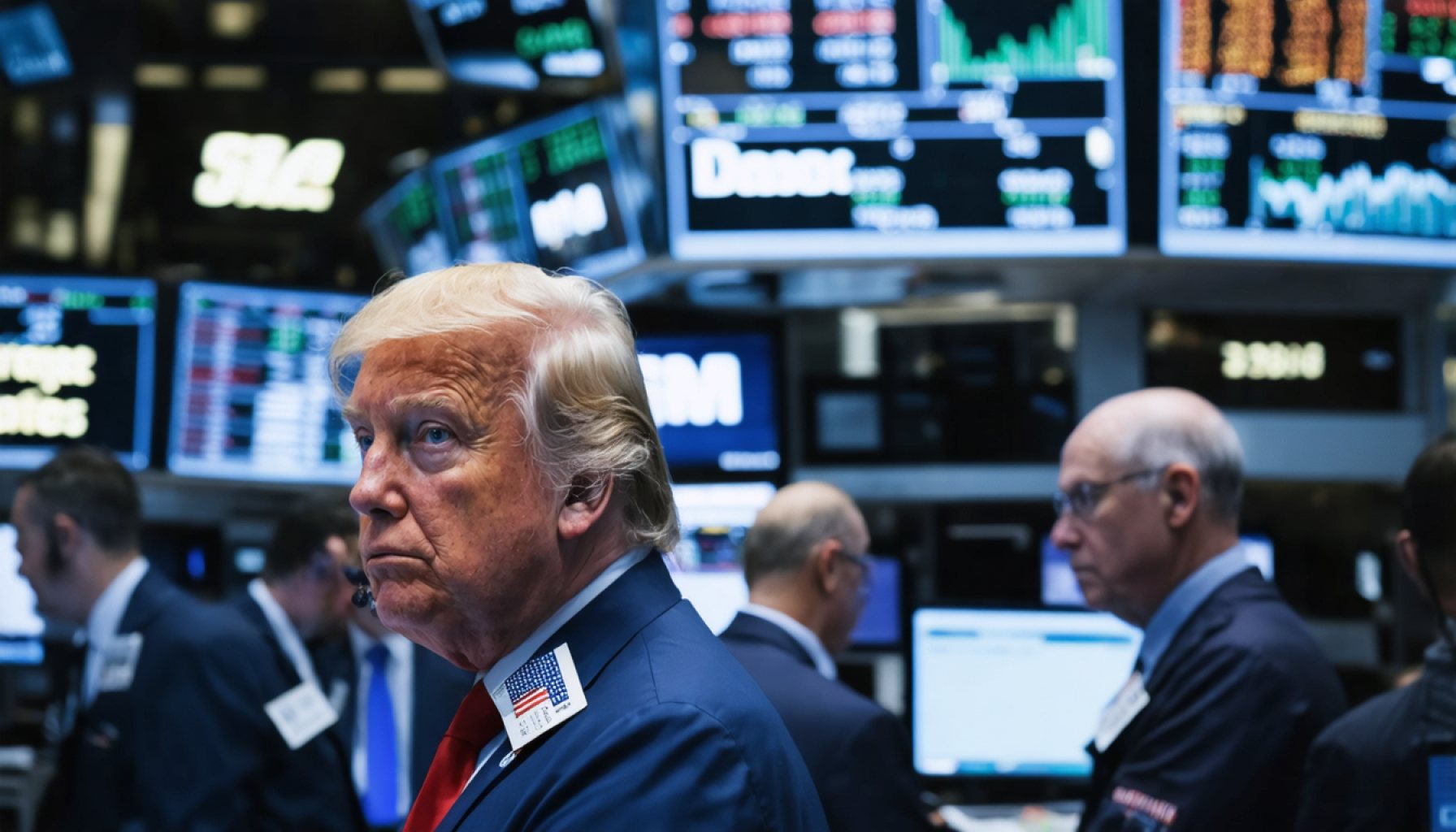- Wall Street faced significant declines, with the Dow, S&P 500, and Nasdaq experiencing substantial single-day losses stemming from unexpected U.S. tariff announcements.
- The Dow plunged nearly 4% and 5.5% on Thursday and Friday, evoking historical market downturns like Black Monday in 1987 and the Great Depression in 1929.
- The S&P 500 dropped close to 6% by Friday, marking one of its top 20 sharpest declines since its inception.
- The tech-heavy Nasdaq fell almost 6% on Thursday and an additional 5.82% by week’s end, highlighting vulnerability amid geopolitical shifts.
- This market turbulence underscores the importance of preparing for unpredictability through diversification and strategic risk management.
- Financial resilience requires vigilance amid the interconnected influences of international trade and economic policies.
A gloomy cloud descended over Wall Street this week, leaving behind deep cuts to its most formidable indexes. Three towers of the global financial landscape—the Dow Jones Industrial Average, the S&P 500, and the Nasdaq Composite—witnessed some of the most substantial single-day declines since the world was rocked by the COVID-19 pandemic in 2020. The catalyst? An unanticipated proclamation from the U.S. President, unfurling tariffs spanning 10% to more on imports from nations worldwide, rattling investors and unleashing waves of uncertainty.
On Thursday and Friday, investors saw the Dow plummet by nearly 4% and 5.5%, respectively, pulling it into a nosedive reminiscent of past economic turmoil. The thunderous drop echoed the market’s severe downturns in history, including the infamously tumultuous periods of the 1987 Black Monday and the inception of the Great Depression in 1929.
The S&P 500, carrying the weight of 500 beacon companies, wasn’t spared its share of turbulence. It recorded nearly a 6% dip by Friday’s closing bell, marking its position among the top 20 sharpest declines since its formation in 1957. Meanwhile, the Nasdaq Composite, a haven for tech giants, slipped by almost 6% on Thursday, only to lose another 5.82% as the week drew to a close.
Historical context, groaning shelves of archives laden with tales of past financial meltdowns, reminds us that what is seen now is part reformative and part cyclical. Among these narratives are the days that shook economies to their foundations, from Black Monday’s panic in 1987 when fear toppled the Dow by a heart-stopping 22%, to the spectral shadows of the Great Recession.
This week’s upheaval reinforces a fundamental truth of investing: the importance of preparing for the unpredictable. Stock markets, while steering capital and opportunity, are not insulated from geopolitical shifts, policy decisions, or global economic jitters. Investors and policymakers alike are invited, once again, to reflect on the delicate fabric of international trade, economic policy, and their intertwined impact on fiscal stability.
The critical takeaway in this latest market jolt? Vigilance and diversification are key allies in navigating the mercurial nature of markets. As the dust settles, investors are reminded that understanding risk and maintaining a strategic outlook can pave the way through even the darkest market storms.
Markets Tumble: How to Navigate Financial Storms with Confidence
Understanding the Recent Market Fluctuations
The recent significant decline in major stock indices like the Dow Jones Industrial Average, S&P 500, and Nasdaq Composite can be daunting for investors. Here’s a deeper dive into what happened and how you can manage such market turbulence.
Key Insights from Recent Volatility:
1. Tariff Announcements: The recent drop in stock indices is largely attributed to unexpected tariff announcements by the U.S. President, imposing new duties on imports from various countries. This kind of geopolitical move often creates uncertainty, affecting investor confidence and causing market instability.
2. Historical Perspective: Such events are not new. The market has historically faced downturns during events like the 1987 Black Monday, where the Dow fell by 22%, and the 2008 financial crisis, demonstrating the cyclical nature of financial markets.
3. Current Market Conditions: The S&P 500 saw nearly a 6% dip, and the Nasdaq Composite, heavy with tech stocks, also suffered significant losses. However, markets have rebounded from past shocks, highlighting the resilience and eventual recovery of financial systems.
How to Weather Market Volatility
Investing Strategies for Handling Market Swings:
– Diversification: Spread your investments across various asset classes, sectors, and geographies. This can reduce the impact of a downturn in any single market.
– Risk Assessment: Regularly evaluate your risk tolerance and adjust your investment portfolio accordingly. Risk profiles can change based on personal financial goals and market conditions.
– Long-Term Outlook: Resist the urge to make reactive decisions based on short-term market movements. History shows that markets tend to recover over time.
– Stay Informed: Keep up with current events, market analyses, and expert opinions to make informed investment decisions. However, be wary of overreacting to news without thorough assessment.
Market Forecasts & Industry Trends
Predictions and Trends:
– Short-Term:
– Market volatility may continue as geopolitical factors and policy decisions unfold. Short-term fluctuations can present buying opportunities, particularly in oversold sectors.
– Long-Term:
– As economies adjust to new trade policies and global market dynamics, expect stabilized growth. Technology and renewable energy sectors might lead in recovery and offer promising investment opportunities.
Real-World Use Cases and Practical Advice
– Case Study – 2008 Financial Crisis: Investors who maintained diversified portfolios and stayed committed to their investment plans typically saw strong recovery post-crisis.
– Life Hacks for Investors:
– Automated Investment Plans: Set up automatic contributions to your investment accounts to smooth out the impact of volatility through dollar-cost averaging.
– Emergency Fund: Ensure you have a readily accessible emergency fund to avoid needing to liquidate investments during downturns.
Actionable Recommendations
– Rebalance Your Portfolio: Regularly review and adjust your investments to align with changing market conditions and personal goals.
– Consult Financial Advisors: Engage with financial advisors who can provide insights and personalized strategies tailored to your risk profile and financial ambitions.
Stay informed and proactive in your investment approach to best navigate the complex financial landscape.
For further financial guidance, visit [Bloomberg](https://www.bloomberg.com).
